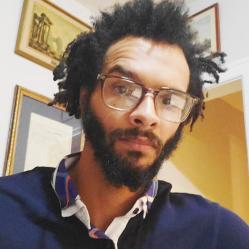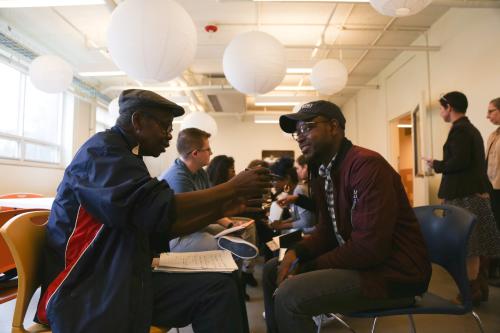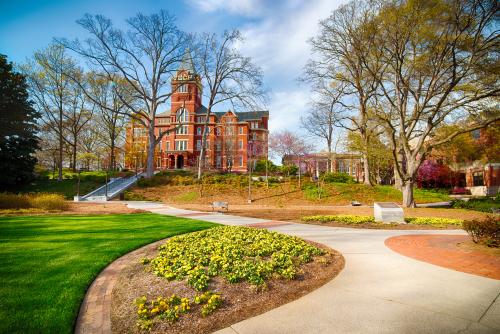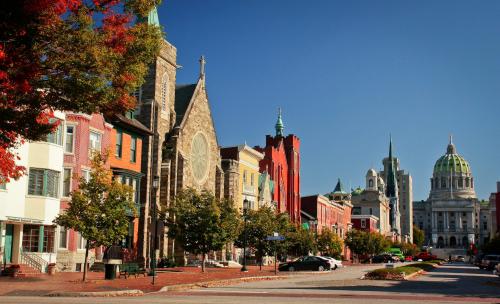In the last two decades, the number of Black adults with a college degree has more than doubled, from 3 million to 6.7 million, marking an increase in the percentage of the Black population (age 25 and older) with a postsecondary degree from 15% in 2000 to 23% in 2019. The affiliated benefits of personal and skill development, increased job opportunities, wage growth, and economic and social mobility make clear that postsecondary degree attainment is vital for economic stability. However, during this same time of rising degree attainment, Black median income was largely stagnate: from $43,581 in 2000 to $44,000 in 2019. Meaning, the rise in Black degree attainment is not concomitant with an increase in Black earnings.
Worse yet, The Wall Street Journal reports that overall Black household wealth for college graduates in their 30s has “fallen to $8,200 from about $50,400 three decades ago”—largely due to the negative impact of student debt required to finance that education. Black and Latino or Hispanic parents are more likely than white parents to see a college degree as key for their children’s success, according to a 2015 Pew Research Center report. However, Black people’s strivings and educational gains are not rewarded on pace with their white peers, confirming the adage “you have to be twice and good to get the same result.”
The COVID-19 pandemic has only exacerbated this phenomenon. Time magazine reports that an estimated 7 million to 10 million American adults cancelled plans to attend college in fall 2020. The article cited that the number of American high schoolers who attended college immediately following their graduation in 2020 declined by 6.8% from 2019 rates, with an even larger decline of 11.4% at schools with high rates of poverty. The decline in enrollment was particularly pronounced for Black and low-income students, especially those who would have otherwise attended community colleges. The pandemic also forced many enrolled college students to suspend their education. Again, Black students showed a more pronounced drop than their white peers: 7.2% of Black students withdrew from their institutions, more than double the 3.4% rate for white students, according to the National Center for Education Statistics.
Student debt is discouraging low-wealth, low-income students from enrolling in college or continuing their pursuit of a college degree. In a 2021 nationwide survey of nearly 1,300 Black borrowers conducted by the Education Trust, more than half said they do not believe that student loans advance racial equality for Black borrowers (58%) or increase Black borrowers’ ability to build wealth (61%). Approximately 66% of students surveyed report that they regret having taken out education loans that now seem “unpayable” and “not worth it.”
The irony is that the pandemic’s effect on enrollment and degree completion damaged what ostensibly helped many Black people weather the pandemic. Black Americans with a college degree fared much better than those without a degree. Black Americans whose education was impeded by the pandemic’s economic shock will be even more vulnerable to the next crisis. It’s vital that we find ways to help economically vulnerable students enroll or reenroll in postsecondary education and complete their degree without burdening them with debt.
Eliminating student debt won’t eliminate the racial wealth gap, which sees white families holding 10 times more wealth than Black families. However, mitigating debt and eliminating systemic racism in labor markets have ameliorating effects and may encourage people to stay or enroll in a postsecondary institution. Therefore, boosting college degree attainment needs to be explicitly connected to a broader range of policies that address many economic levers leading to disparate outcomes.
This report focuses on the seven cities that we profiled in standalone articles: Detroit; Nashville, Tenn.; Tulsa, Okla.; Richmond, Va.; Philadelphia; Mobile, Ala.; and St. Louis. In each, we provided qualitative research, historical context, and disaggregated statistics in order to gain a clear vision of what is needed to help Black students and workers thrive. In this piece, we share three lessons from research and spotlight the city of St. Louis as a case study in equitable development.
Lesson 1: Debt is impeding educational attainment
To better understand the way that debt, especially student loan debt, is an obstacle to college degree attainment, we looked at Detroit and Nashville.
Beginning with Detroit, college applications declined in that metro area as well as across the state, in keeping with nationwide trends. The Detroit Regional Chamber reports that applications statewide fell by 16% in the 2020-21 academic year. In the Detroit region alone, 23,297 students did not complete their FAFSA student aid application in the 2019-20 school year, leaving $224 million in federal aid unclaimed. But even before COVID-19, college attendance was declining. The Chamber reports that in the last five years, the percentage of high school graduates who attend college has substantially declined.
Fewer applications mean fewer people in college and, later on, fewer graduates. When disaggregated by race, Detroit’s drop in college completion rates is steepest among Black students. The city’s Black adult population has the lowest rate by race of postsecondary completion (26%), even as it has the region’s largest share of people with “some college, no degree” (13%).
One of the main barriers to finishing a degree in both Detroit as well as another city we profiled, Nashville, is the economic precarity of having current debt and the fear of future indebtedness. In our report on Nashville, we write how the city’s residents share that being low-income often means being trapped in a financial holding pattern: Residents need postsecondary education to boost wages, but they do not have family wealth or savings to draw from, and thus cannot afford to forego wages to pursue that education while still paying for basic needs such as food, child care, and transportation.
In addition to these financial constraints that lower college completion, the fear of accumulating student debt often discourages low-income Americans from beginning or continuing their college education at scale. As our 2021 report on student debt shows, the census tracts with some of the lowest incomes represent the bulk of places where student loans are held. Low-income students feel increasingly concerned about getting caught in a debt trap, even as mounting financial pressures force them toward taking out more loans to cover the basic life costs that students with wealth can pay for. Combined, these factors can lead to Black students dropping out of school altogether—but they still must make payments on previous loans, without the support of wage increases associated with having a degree, making it harder to establish the kind of savings needed to resume their education.
To strengthen efforts to increase degree attainment—including support for students caught in the “some college, no degree” category—we need to embrace solutions that decrease debt and provide genuine opportunities for wealth-building. Both Nashville and Detroit have spearheaded programs aimed at increasing enrollment while also lowering student debt and providing a financial safety net for students. These efforts include everything from transfer agreements that make it easier for community college students to transition into a four-year program to micro-grants that help students pay for emergency costs such as car repair.
While these efforts are helpful, they do not address the root issue: the lack of intergenerational Black wealth caused by systemic racism, including decades of redlining and urban renewal, both of which robbed Black people of wealth and opportunity. To understand these causes of today’s racial wealth gap, we need to attend to the broader localized histories of places that have experienced substantial racial injustice over the course of many decades.
Lesson 2: History matters in explaining wealth and education gaps
As we note in our article, Richmond—the former seat of the Confederacy—has long been an epicenter of racial injustice. Richmond was a destination port for slave ships and had one of the largest slave markets. After the Civil War and Reconstruction period, Richmond pioneered racist zoning ordinances that then proliferated across the nation. And in the 20th century, Richmond notoriously blocked investment to Black neighborhoods through its practice of redlining.
Today, Richmond’s Black residents are more likely to experience overpolicing and punitive school discipline and suspension, even as they have less access to public transit and are disproportionately denied home loans at almost every income level. In addition, many of Richmond’s Black residents who live in formerly redlined communities suffer from a profound lack of green space, which depresses property value while also leaving residents more vulnerable to high temperatures and adverse health outcomes. This heat exposure will only grow worse as the effects of climate change worsen.
Our research shows that while Richmond’s Black population is spread across the metro area, it is tightly concentrated in certain neighborhoods. In addition, neighborhoods with large Black populations have both lower median incomes and lower college attainment rates. This underscores the fact that the systemic harms of racism manifest as a place-based issue rather than simply a household-level problem.

Racism in America has not only blocked wealth creation for Black residents—it has actively destroyed it as well. Nowhere is this more evident than in the history surrounding Tulsa’s Black Wall Street and its destruction by white mobs during the 1921 race massacre, as well as its subsequent destruction by white planners during the urban renewal period.
In our report on Tulsa, we cite academic scholarship estimating that upward of $200 million in Black wealth was destroyed in the 1921 race massacre. To conceptualize that figure, we show how many college degrees could be fully funded (and how much debt saved) if that money were in circulation today. Given the clear economic injustices, we argue that Tulsa should implement reparations to address ongoing disparities in wealth that are demonstrably rooted in the harms of the recent past.
Compounding matters are more mundane forms of wealth extraction. For instance, housing devaluation saps billions of dollars from residents of Black neighborhoods in Tulsa and other cities we profiled. Brookings research from 2018 found that homes in Black neighborhoods across the country are underpriced by approximately 23% (or $48,000) compared to homes where the share of the Black population is less than 1%. Cumulatively, this amounts to $156 billion in lost equity nationwide. To put this in perspective, that amount is the equivalent of more than 8 million four-year degrees based on the average price of public institutions in 2018.

Historical circumstances explain a lot of today’s racial disparities across the nation’s metro areas. But there is plenty of ongoing racism in labor markets as well. And our research finds that even when Black people earn postsecondary degrees or credentials, they still face ongoing systemic racism in wages.
Lesson 3: Racism hurts credentialed Black workers too
At the beginning of this report, we cited research showing that Black college attainment has grown substantially even as Black median income stayed roughly the same. One contributing factor to why this is the case is that there are often inequities baked into local and regional labor markets.
In our report on Philadelphia, we provide analysis of the metro area labor market revealing that Black and Latino or Hispanic workers face a wage penalty at every point on their educational journey. These disparities are so jarring that the average Black worker with a college degree makes only slightly more than the average white worker without a degree. For bachelor’s degree holders, the premium for white workers is almost $25,000 in additional yearly income over Black and Latino or Hispanic workers. In addition, we found that Black workers are overrepresented in service and support roles and underrepresented in managerial roles.

There are similar wage disparities present in Mobile, particularly in the manufacturing industry, which employs a large share of the workforce and provides high wages compared to many of the metro area’s other sectors. Our research reveals that the median earnings for Black workers in the manufacturing industry are a staggering $25,629 less than the median for non-Black workers. This racial earnings gap is so large that it is even more pronounced than the earnings gap between workers with degrees versus without. And education does not make up for the racial income gap; our analysis shows that the median Black worker with a college or trade school degree in the manufacturing industry still makes $875 less than the median white worker with no degree.

Given these disparities, we cannot keep expecting college attainment or skill development to be the silver bullet many believe it to be when so many metropolitan and regional economies are structurally biased in the allocation of resources and opportunities. Instead, individual firms need to be proactive about ensuring that equity is hardwired at every stage, from recruitment to training to promotion, and that there are standardized and transparent practices surrounding wages and advancement within the firm. In addition, these metro areas need public investment tied to metrics for efficacy and accountability, as well as economic development that is explicitly centered on racial equity.
St Louis: A model for equitable development
Each of the seven cities we included in our research have promising initiatives designed to boost educational attainment with a focus on racial equity. For our case study in this piece, we chose St. Louis because there are growing overlaps between city administration and various organizations to address several drivers of the racial wealth gap at once through coordinated and purposeful economic development.
St. Louis Mayor Tishaura O. Jones, a Black woman, believes that overpolicing and mass incarceration are not appropriate responses to concentrated poverty. “St. Louis must focus on its most vulnerable populations to address core problems first, rather than respond to people’s needs with arrest and incarceration,” Jones said in an interview with USA Today.
Just a few months into her tenure, Jones is already delivering on her promise to center racial equity. She has used participatory budgeting to involve the public in deciding how to spend $68 million in American Rescue Plan funds received by the city. And she introduced an equity scorecard to report on public data regarding neighborhood characteristics in St. Louis. In addition, Jones has worked to relocate money in the city budget away from prisons and policing and toward addressing racial disparities through economic development.
In our St. Louis piece, we also highlighted the work of Blake Strode and Neal Richardson, two Black men who are helping to shape equitable development in the city. Through his organization, ArchCity Defenders, Strode works with “people seeking to rebuild their lives after being targeted and punished by a criminal legal system of police, courts, and jails in communities struggling to overcome decades of neglect, disinvestment, state violence, and exploitation.” In partnership with outside funders, Strode and his organization have been instrumental in efforts to close the Workhouse—the notorious St. Louis jail—with the goal of freeing up important financial resources that will hopefully be reallocated into initiatives that benefit low-income households and communities.
Richardson is the recently appointed executive leader of the St Louis Development Corporation (SLDC), a not-for-profit organization that works to attract private investment and coordinate economic development. In a profile in The St. Louis American, Richardson explained his focus on racial equity as part of a vision for economic justice which he sees as “being able to address the historical barriers and economic inequities that have prevented everyone from being able to contribute, have ownership in our economic future.” This vision aligns with that of the mayoral administration, which means there is plenty of room for the kind of coordinated partnerships that can create sustainable change in the city.
A strategy—and imperative—to close the racial wealth gap
Building Black wealth must be a multipronged effort. We need to continue increasing the number of Black students who are receiving postsecondary education, whether through registered apprenticeships, trade schools, associate degrees through community colleges, or four-year degrees. But we must simultaneously tackle other drivers of the racial wealth gap, including student debt, neighborhood disinvestment, concentrated poverty, and the ongoing negative effects of systemic racism on job opportunities and wages.
Amidst this discussion of statistics, it is important to remember that we are talking about individual lives. Consider the words of Viola Fletcher, who at 107 years of age, traveled to Washington, D.C. earlier this year to testify before Congress about surviving the 1921 race massacre in Tulsa. “I’m here seeking justice and I’m asking my country to acknowledge what happened in Tulsa in 1921,” Fletcher told Congress. This testimony is a reminder that a history of racial violence is deeply relevant to today’s disparate outcomes. And regarding student debt, consider the words of 62 year old Georgia, who borrowed $24,000 in 1990 and owes $125,000 today: “I have worked at a nonprofit for 27 years and have tried to work with my multiple loan servicers to get public service forgiveness. I only get the run around,” she told the Education Trust. “I am 62 years old and do not know how I will retire.”
We have a moral imperative to end discrimination and eliminate debt. While it is vital that Black students continue to receive postsecondary education, we must ensure that they can do so without being financially shackled, and that they will be paid equitably in the jobs their education is preparing them for. In addition, we must continue to address the historical causes of disparate racial outcomes by being honest about the nation’s record of oppression and working to counteract cycles of neglect and exploitation through new investment.
Finally, to close the racial wealth gap, we need better governance rooted in public data; we need federal, state, and local public funding to revitalize areas; we need employers willing to audit their hiring, promotion, and pay scales; and we need institutions of higher education that can streamline degrees and work with employers to create meaningful pathways into good jobs.






